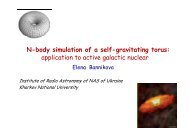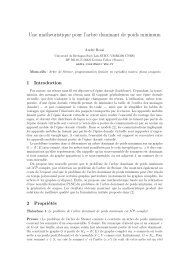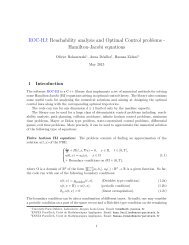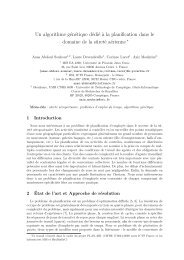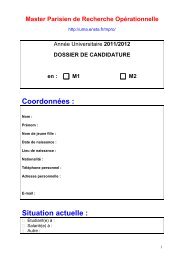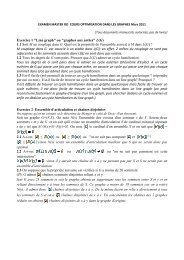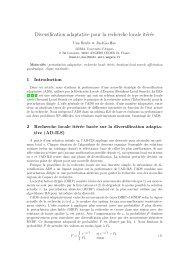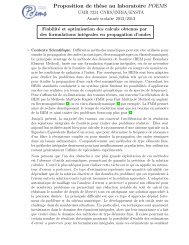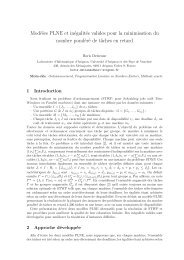Numerical analysis of time discretization of optimal control problems
Numerical analysis of time discretization of optimal control problems
Numerical analysis of time discretization of optimal control problems
You also want an ePaper? Increase the reach of your titles
YUMPU automatically turns print PDFs into web optimized ePapers that Google loves.
Theorem 1 (Poincaré). Let H(p,q) : R 2n → R be <strong>of</strong> class C 2 . Then the<br />
associated Hamiltonian flow is symplectic.<br />
Pro<strong>of</strong>. Denote the flow by ϕt. The amount Ψt := ∂ϕt(y0)/∂y0 is solution<br />
<strong>of</strong> the variational equation, and hence, skipping the arguments <strong>of</strong> H:<br />
d<br />
dt (Ψt·JΨt) = ˙ Ψt·JΨt+Ψt·J ˙ Ψt = ΨtD 2 HJ −⊤ JΨt+Ψt·JD 2 HΨt = 0,<br />
since J −⊤ J −1 is the identity matrix. Therefore Ψt·JΨt is invariant along<br />
the trajectory, and hence, equal to its initial value J, as was to be proved.<br />
<br />
Theorem 2 (Bochev-Scovel 1994). The partitioned Runge-Kutta schemes<br />
derived from the <strong>optimal</strong>ity system are symplectic.<br />
49



